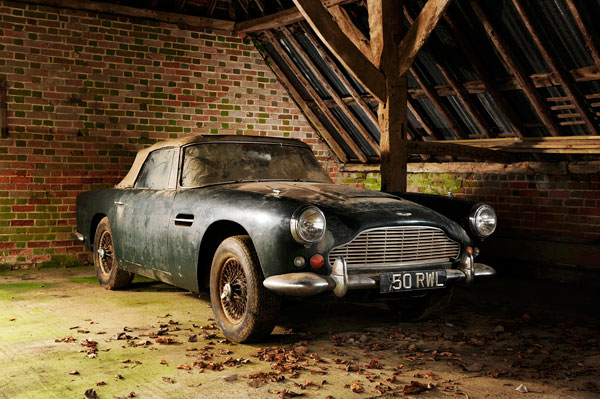No chassis number available
Classically proportioned and instantly recognizable from the moment of its introduction in 1958, the Touring-styled Aston Martin DB4 established a look that would survive, with only minor revisions, until 1970. Designed by Tadek Marek and already proven in racing, the DB4’s new twin-cam, 6-cylinder engine displaced 3670cc while the gearbox was a new David Brown 4-speed, all-synchromesh unit. An immensely strong platform-type chassis, designed by Harold Beach, replaced the preceding DB2/4’s multi-tubular space frame. Boasting disc brakes all around—and with 240 horsepower on tap—the DB4 was the first production car capable of accelerating from a standing start to 100 mph and back to rest again in under 30 seconds.
The DB4 was available only as a closed coupe until September 1961, when the convertible version was unveiled at that year’s Motor Show.
Never listed in the AMOC Register, DB4C/1104R has had only two owners from new, having been purchased by the current vendor in 1978 from the first owner, agronomist Professor Geoffrey Emett Blackman, FRS. At the time he purchased the Aston, Geoffrey Blackman was Sibthorpian Professor of Rural Economy at Oxford University and Director of the Agricultural Research Council Unit of Experimental Agronomy there.
The Aston has been laid up in dry storage ever since 1979 and currently displays a total of only 60,000 miles on the odometer. The engine is now back in the car, which is presented in barn find condition, ripe for sympathetic restoration. An exciting and potentially most rewarding project for the Aston Martin enthusiast, DB4C/1104R is offered with instruction manual, workshop manual, parts catalogue and Swansea V5 registration document.

